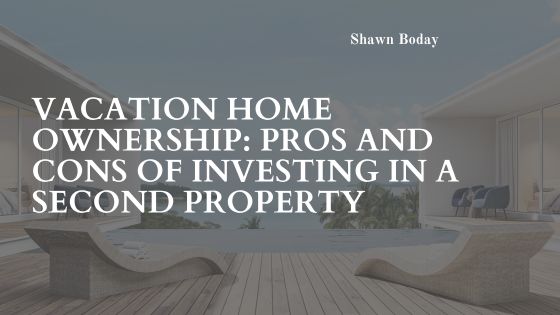
by Shawn Boday | Apr 25, 2024 | Home Buying Process, House Flipping, Housing Market, Real Estate, Real Estate Investing, Real Estate Tips, Real Estate Value, Shawn Boday, Uncategorized
Renovating a home can be an exciting project, whether planning to enhance your living space or preparing to sell your property. When renovating for resale, you must make strategic decisions to increase your home’s value and attract potential buyers. In this blog post, we’ll explore some valuable tips for renovating your home with resale in mind.
1. Know Your Market
Before embarking on any renovation project, it’s crucial to research the local real estate market and understand the preferences and expectations of potential buyers in your area. Take note of the features and amenities in high demand and are likely to fetch a higher sale price. For example, buyers may prioritize updated kitchens and bathrooms in some markets, while in others, outdoor living spaces or energy-efficient upgrades may be more desirable.
2. Focus on High-Return Projects
When renovating for resale, it’s important to prioritize projects that offer a high return on investment (ROI). According to Remodeling magazine’s annual Cost vs. Value report, some of the renovations with the highest ROI include kitchen remodels, bathroom upgrades, and adding a deck or patio. These projects not only enhance the aesthetic appeal of your home but also provide tangible value that can increase its resale value.
3. Enhance Curb Appeal
First impressions matter, especially when selling a home. Improving your home’s curb appeal can significantly attract potential buyers and set the stage for a positive viewing experience. Consider simple yet effective upgrades such as painting the exterior, replacing the front door, updating landscaping, and adding outdoor lighting. These improvements can make your home more inviting and memorable to prospective buyers.
4. Update Kitchen and Bathrooms
Kitchens and bathrooms are often the focal points of a home and can significantly influence a buyer’s decision. Consider updating these spaces with modern fixtures, appliances, and finishes to create a more functional and visually appealing environment. Focus on timeless design elements and quality materials that will appeal to many buyers and stand the test of time.
5. Increase Energy Efficiency
Energy-efficient upgrades reduce utility costs for homeowners and appeal to environmentally-conscious buyers looking for sustainable features in a home. Consider investing in energy-efficient appliances, windows, insulation, and HVAC systems to improve your home’s energy performance and attract eco-minded buyers. Highlighting these upgrades can also differentiate your property from others on the market and increase its overall value.
6. Optimize Storage Space
Buyers are always looking for ample storage space, so maximizing storage opportunities throughout your home can make a big difference in its appeal. Consider adding shelving, closet organizers, or storage solutions such as under-stairs or built-in cabinets. These additions can help buyers visualize themselves living in the space and make your home feel more organized and functional.
7. Keep It Neutral and Timeless
When renovating for resale, it’s essential to appeal to a broad audience by choosing neutral and timeless design elements. Avoid overly trendy or niche features that may appeal to only a subset of buyers and could potentially turn off others. Opt for neutral paint colors, classic finishes, and versatile design choices that will stand the test of time and appeal to a wide range of tastes and preferences.
Conclusion
Renovating a resale home requires careful planning, strategic decision-making, and focusing on projects that maximize value and appeal to potential buyers. By knowing your market, prioritizing high-ROI projects, enhancing curb appeal, updating key areas like kitchens and bathrooms, increasing energy efficiency, optimizing storage space, and keeping design choices neutral and timeless, you can increase your home’s resale value and attract more interested buyers. With thoughtful renovation choices and attention to detail, you can set your home apart from the competition and achieve a successful sale at a higher price point.

by Shawn Boday | Apr 25, 2024 | Airbnb, Business, Housing Market, Real Estate, Real Estate Investing, Real Estate Tips, Real Estate Value
For many people, owning a vacation home is a dream come true—a place to escape the hustle and bustle of everyday life, create lasting memories with family and friends, and potentially generate rental income. However, like any investment, vacation home ownership comes with its own pros and cons. In this blog post, we’ll explore the advantages and disadvantages of investing in a second property for vacation purposes.
Pros of Vacation Home Ownership:
- Personal Use and Enjoyment: The most significant benefit of owning a vacation home is the ability to use and enjoy the property for personal getaways. Having a second home allows you to escape to your favorite destination whenever you want, without the hassle of booking accommodations.
- Rental Income Potential: Renting out your vacation home when you’re not using it can provide an additional source of income. With the rise of vacation rental platforms like Airbnb and VRBO, it’s more accessible to market your property to travelers and earn rental income to offset ownership costs.
- Potential for Appreciation: Like primary residences, vacation homes have the potential to appreciate value over time, especially in desirable vacation destinations. By investing in a property in a popular area with solid market fundamentals, you may be able to build equity and realize capital gains over the long term.
- Tax Benefits: Vacation homeowners may be eligible for certain tax deductions, such as mortgage interest, property taxes, and operating expenses related to renting the property. Consult with a tax professional to understand the tax advantages available to you as a vacation home owner.
- Diversification of Investments: Owning a vacation home can serve as a form of diversification within your investment portfolio, providing exposure to real estate assets in addition to stocks, bonds, and other traditional investments.
Cons of Vacation Home Ownership:
- High Initial Costs: Purchasing a vacation home involves significant upfront costs, including the down payment, closing costs, property taxes, insurance, and ongoing maintenance expenses. Additionally, you’ll need to factor in monthly loan payments if you’re financing the purchase with a mortgage.
- Ongoing Maintenance and Upkeep: Owning a second home requires ongoing maintenance and upkeep to keep the property in good condition. From routine repairs and landscaping to unexpected maintenance emergencies, these expenses can add up over time and cut into your rental income.
- Vacancy and Seasonal Demand: Depending on the location and seasonality of your vacation home, you may experience periods of vacancy when the property sits unoccupied. This can be particularly challenging in areas with fluctuating demand or during off-peak seasons when rental income may be limited.
- Risks of Property Management: Renting out your vacation home includes property damage, liability issues, and potential conflicts with renters. Hiring a property management company can help mitigate these risks, but it also adds to the overall cost of ownership.
- Market Volatility and Economic Factors: The value of your vacation home is subject to market fluctuations and economic factors beyond your control. Changes in tourism trends, local regulations, interest rates, and economic conditions can impact your area’s property values and rental demand.
Conclusion:
Owning a vacation home can be a rewarding investment that provides years of enjoyment and potential financial returns. However, it’s essential to weigh the pros and cons carefully and consider your long-term financial goals, lifestyle preferences, and risk tolerance before deciding. By conducting thorough research, assessing your budget and investment objectives, and consulting with real estate professionals, you can decide whether vacation home ownership is proper for you.

by Shawn Boday | Apr 25, 2024 | Business, Home Buying Process, House Flipping, Housing Market, Real Estate, Real Estate Investing, Real Estate Tips, Real Estate Value, Shawn Boday
As the population ages, seniors play an increasingly significant role in shaping the real estate market. With changing preferences, needs, and lifestyles, this demographic drives demand for specific housing and amenities. This blog post will explore how seniors influence the housing market and what this means for real estate trends.
Rise in Demand for Senior-Friendly Housing
One of the most significant impacts of the aging population on the real estate market is the growing demand for senior-friendly housing options. As individuals age, they often seek homes that are more accessible, easier to maintain, and better suited to their changing needs.
Many seniors are downsizing from larger homes to smaller, more manageable properties like condos, townhouses, or single-level dwellings. These housing options typically require less maintenance and offer amenities such as community centers, fitness facilities, and on-site healthcare services, which appeal to seniors looking to simplify their lives and enjoy an active lifestyle.
Age-Friendly Features and Amenities
In addition to downsizing, seniors seek homes with age-friendly features and amenities that promote safety, comfort, and independence. Features such as grab bars in bathrooms, wider doorways and hallways, step-free entrances, and low-maintenance landscaping are becoming increasingly popular among older homeowners.
Senior living communities and retirement villages are also gaining popularity. These communities offer a range of amenities and services tailored to the needs of older adults. These communities often include on-site healthcare facilities, recreational activities, social events, and transportation services, providing residents with a supportive and vibrant environment to age gracefully.
Impact on Housing Inventory and Affordability
The growing demand for senior-friendly housing options affects housing inventory and affordability in many markets. As more seniors choose to age in place or downsize to smaller homes, there is increased competition for these properties, leading to higher prices and reduced availability, particularly in desirable retirement destinations.
Additionally, the influx of retirees into certain areas can pressure local housing markets, driving up prices and making it more challenging for younger generations to afford homeownership. This can exacerbate affordability issues, especially in areas with limited housing supply and high demand.
Opportunities for Real Estate Investors
The aging population also presents opportunities for real estate investors who are savvy enough to recognize and capitalize on emerging trends. Investing in senior-friendly housing options, such as multifamily properties, assisted living facilities, or senior living communities, can offer attractive returns and steady rental income, particularly in markets with a large and growing senior population.
Moreover, retrofitting existing properties to include age-friendly features and amenities can add value and appeal to older homeowners looking to age in place or downsize. Investing in renovations and upgrades that cater to the needs of seniors can make properties more attractive to this demographic and increase their marketability and resale value.
Conclusion
The aging population is profoundly impacting the real estate market, driving demand for senior-friendly housing options and amenities. As more seniors seek homes that are accessible, comfortable, and supportive of their changing needs, the housing market will continue to evolve to accommodate these preferences. For real estate professionals, investors, and developers, understanding and adapting to the needs of the aging population presents significant opportunities for growth and innovation in the years to come.

by Shawn Boday | Mar 19, 2024 | Real Estate, Real Estate Investing, Real Estate Tips
Real estate markets are cyclical, characterized by periods of expansion, peak, contraction, and trough. Understanding these cycles and their impact on property values, rental rates, and investment opportunities is crucial for real estate investors and stakeholders. In this blog post, we’ll delve into the concept of real estate cycles, explore the key phases of the cycle, and discuss strategies for timing the market for success.
- The Phases of the Real Estate Cycle:
- Expansion: During the expansion phase, real estate markets experience robust growth, characterized by increasing property values, rising demand, and strong investor sentiment. Economic factors such as low interest rates, job growth, and population growth contribute to increased demand for real estate assets. Rental rates and property values tend to rise steadily during this phase, attracting investors and developers.
- Peak: The peak marks the top of the real estate cycle, where property values reach their highest point, and demand begins to plateau. Speculative buying and excessive optimism may drive prices beyond fundamentals during this phase. However, signs of overheating, such as declining affordability, rising vacancy rates, and excessive leverage, may indicate that the market is nearing its peak.
- Contraction: In the contraction phase, real estate markets experience a slowdown or decline in activity, marked by falling property values, decreasing demand, and rising vacancy rates. Economic factors such as rising interest rates, job losses, and oversupply contribute to the contraction phase. Investors may become cautious, and property owners may struggle to sell or lease their assets amid weaker market conditions.
- Trough: The trough represents the bottom of the real estate cycle, where property values stabilize or begin to recover after a period of decline. During this phase, market sentiment is generally negative, and investor confidence is low. However, savvy investors may identify opportunities to acquire undervalued properties at discounted prices, positioning themselves for future growth and appreciation.
- Strategies for Timing the Real Estate Market:
- Research and Analysis: Conduct thorough research and analysis of local market conditions, economic indicators, demographic trends, and supply-demand dynamics. Monitor key metrics such as vacancy rates, absorption rates, rent growth, and employment trends to gauge the health of the market and identify emerging opportunities or risks.
- Stay Flexible: Real estate markets are inherently unpredictable, and timing the market perfectly is challenging. Instead of trying to time the market, focus on building a diversified portfolio of real estate assets across different property types, locations, and market segments. Diversification can help mitigate risks and position your portfolio for long-term growth and resilience.
- Adopt a Contrarian Approach: Consider adopting a contrarian investment approach by buying when others are selling and selling when others are buying. Contrarian investors capitalize on market inefficiencies and sentiment swings by taking positions contrary to prevailing market trends. However, contrarian investing requires patience, discipline, and a willingness to go against the crowd.
- Monitor Leading Indicators: Pay attention to leading indicators that may signal shifts in the real estate market, such as changes in interest rates, housing affordability, construction activity, and investor sentiment. Leading indicators can provide valuable insights into future market trends and help you anticipate changes in supply and demand dynamics.
- Plan for the Long Term: Real estate investing is inherently a long-term endeavor, and short-term market fluctuations should not deter you from pursuing your investment goals. Focus on acquiring high-quality assets with strong fundamentals and enduring value, rather than trying to time short-term market movements. Adopt a patient and disciplined approach to investing, and stay committed to your long-term investment strategy.
Conclusion:
Understanding real estate cycles and timing the market for success requires a combination of research, analysis, flexibility, and discipline. By recognizing the key phases of the real estate cycle, conducting thorough market research, staying flexible in your investment approach, adopting a contrarian mindset when appropriate, monitoring leading indicators, and planning for the long term, you can navigate the ups and downs of the real estate market and capitalize on investment opportunities. Remember, successful real estate investing is not about timing the market perfectly but about making informed decisions based on sound fundamentals and a clear investment strategy.

by Shawn Boday | Feb 29, 2024 | Real Estate, Real Estate Value
Real estate transactions involve numerous legal processes and documents to protect the interests of buyers, sellers, and other stakeholders. Understanding the legal aspects of real estate transactions is essential for navigating contracts, disclosures, and closing processes effectively. In this comprehensive guide, we’ll explore the key legal essentials of real estate transactions to help you make informed decisions and navigate the complexities of buying or selling property.
- Contracts in Real Estate Transactions: Contracts are legally binding agreements that outline the terms and conditions of a real estate transaction. In a real estate context, contracts typically include details such as the purchase price, financing terms, contingencies, and timelines for the transaction. It’s crucial to review contracts carefully and ensure that all terms are clearly defined and agreed upon by all parties involved. Common types of real estate contracts include purchase agreements, sales contracts, and lease agreements.
- Disclosures and Required Documentation: Disclosures are legal documents that provide important information about the condition and history of a property. Sellers are typically required to disclose known defects, hazards, or material facts that may affect the value or desirability of the property. Common disclosures include reports on property inspections, environmental hazards, zoning restrictions, and past renovations or repairs. Buyers should review all disclosures carefully and seek clarification on any issues or concerns before proceeding with the transaction.
- Due Diligence and Property Inspections: Due diligence is the process of thoroughly researching and investigating a property before completing a transaction. This may involve conducting property inspections, obtaining surveys, reviewing title records, and verifying zoning and land use regulations. Property inspections are essential for identifying potential issues or defects that may impact the property’s value or safety. Buyers should hire qualified inspectors to assess the property’s condition and identify any areas of concern.
- Financing and Mortgage Documents: Financing is a critical aspect of real estate transactions, and buyers often need to secure financing through a mortgage lender to purchase a property. Mortgage documents outline the terms of the loan, including the loan amount, interest rate, repayment schedule, and borrower’s obligations. Buyers should review mortgage documents carefully and ensure that they understand the terms and conditions of the loan before signing. Additionally, sellers may need to provide documentation related to any existing liens or mortgages on the property.
- Closing Processes and Title Transfer: The closing process is the final step in a real estate transaction, where ownership of the property is transferred from the seller to the buyer. During closing, all parties involved in the transaction gather to sign legal documents, exchange funds, and transfer ownership of the property. Key documents signed at closing may include the deed, bill of sale, promissory note, and closing statement. Buyers should review all closing documents carefully and ensure that they receive clear title to the property before completing the transaction.
Navigating the legal aspects of real estate transactions requires careful attention to detail, thorough due diligence, and a clear understanding of contractual obligations and legal requirements. By familiarizing yourself with contracts, disclosures, and closing processes, you can confidently navigate the complexities of buying or selling property and protect your interests throughout the transaction. Whether you’re a first-time homebuyer or an experienced investor, understanding real estate legal essentials is essential for a successful and smooth transaction process.

by Shawn Boday | Feb 29, 2024 | Real Estate, Shawn Boday
Real estate flipping, also known as house flipping, is a popular investment strategy in which investors purchase properties, renovate them, and then sell them for a profit. While flipping houses can be a lucrative venture, it requires careful planning, research, and execution to succeed. In this blog post, we’ll explore the ins and outs of real estate flipping, including how to find properties, finance renovations, and maximize profits.
- Finding the Right Property: The first step in real estate flipping is finding the right property to flip. Look for properties in desirable neighborhoods with strong market demand and potential for appreciation. Consider factors such as location, property condition, and price relative to comparable sales in the area. Utilize online listing platforms, real estate agents, and networking to identify potential investment opportunities.
- Conducting Due Diligence: Before purchasing a property, conduct thorough due diligence to assess its investment potential. Evaluate the property’s condition, structural integrity, and repair needs. Obtain professional inspections and estimates for renovation costs to ensure accuracy in your financial projections. Additionally, research local market trends, comparable sales, and property values to determine the property’s resale value and potential profit margin.
- Securing Financing: Financing is a critical aspect of real estate flipping, as it enables investors to fund property acquisitions and renovations. Explore financing options such as traditional mortgages, hard money loans, private lenders, or partnerships with other investors. Consider factors such as interest rates, loan terms, and repayment schedules to choose the financing option that best suits your needs and investment strategy.
- Renovating for Maximum ROI: Once you’ve acquired the property, it’s time to renovate and upgrade it to maximize its resale value. Focus on high-impact improvements that enhance the property’s appeal and functionality, such as kitchen and bathroom upgrades, flooring replacements, and cosmetic enhancements. Set a realistic budget and timeline for renovations, and prioritize projects that offer the highest return on investment (ROI) within your budget constraints.
- Marketing and Selling: After completing renovations, it’s time to market the property and attract potential buyers. Utilize professional photography, virtual tours, and staging to showcase the property in its best light. Develop a comprehensive marketing strategy that includes online listings, open houses, and targeted advertising to reach a wide audience of prospective buyers. Work with a real estate agent or broker to navigate the sales process and negotiate offers to maximize your profit.
- Calculating Profit and ROI: Calculate your profit and return on investment (ROI) by subtracting the total acquisition and renovation costs from the final sale price of the property. Factor in additional expenses such as financing costs, closing costs, and holding costs to determine your net profit. Evaluate your ROI to assess the success of the flip and identify areas for improvement in future projects.
- Managing Risks and Challenges:
Real estate flipping comes with inherent risks and challenges, including market fluctuations, renovation delays, and unexpected expenses. Mitigate risks by conducting thorough due diligence, securing adequate financing, and maintaining a contingency fund for unforeseen costs. Stay informed about local market trends and economic conditions to adapt your strategy and minimize potential risks.
Real estate flipping offers investors the opportunity to profitably buy, renovate, and sell properties in dynamic real estate markets. By following the steps outlined in this guide, investors can successfully navigate the real estate flipping process and achieve their financial goals. Remember to conduct thorough due diligence, carefully plan renovations, and market the property effectively to maximize profits and minimize risks. With diligence, patience, and strategic planning, real estate flipping can be a rewarding and profitable investment venture.






